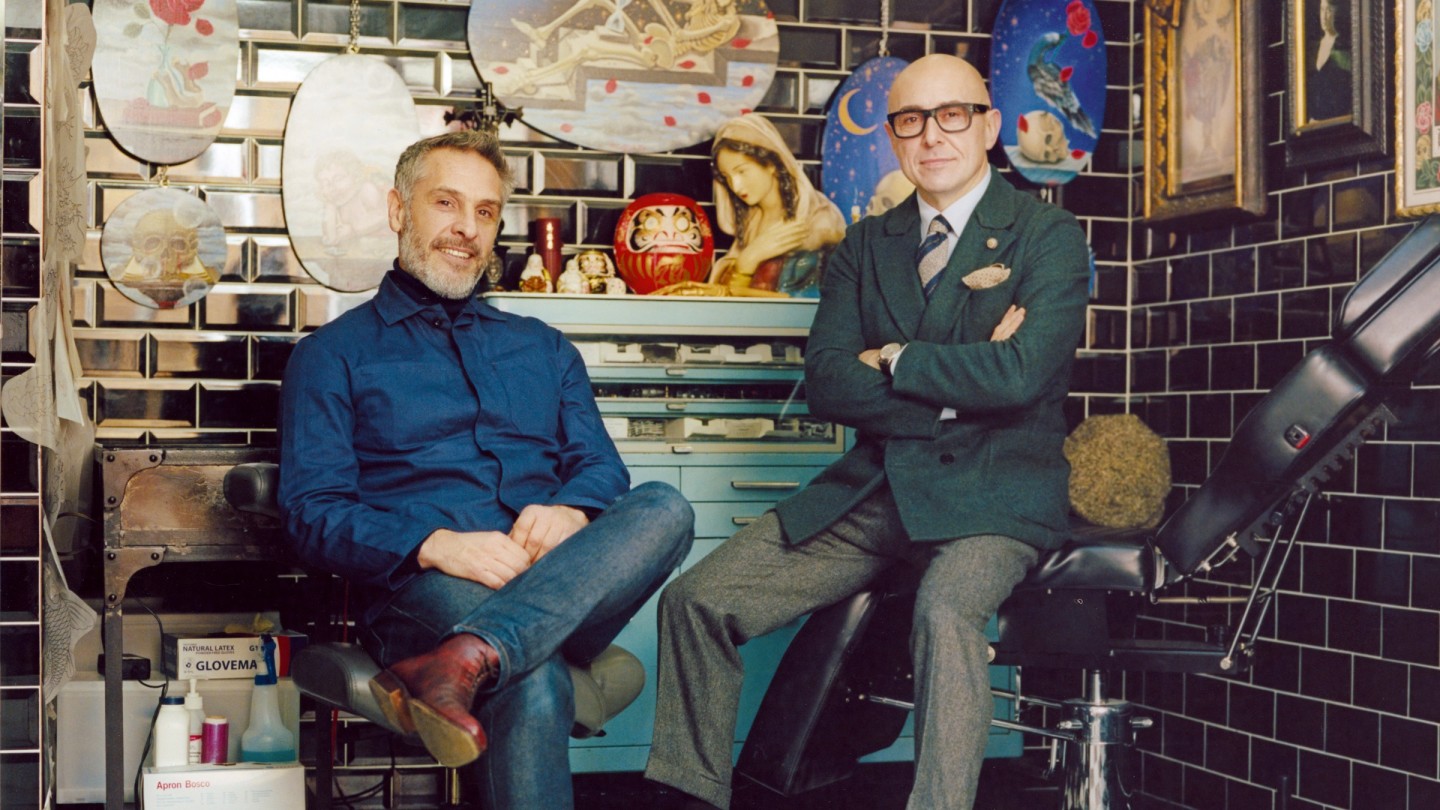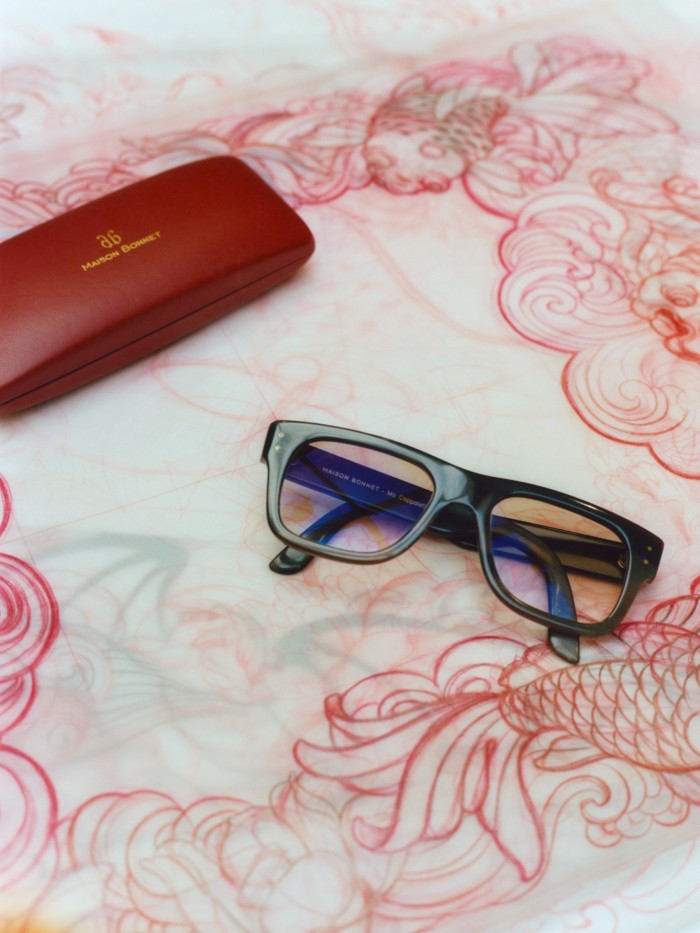Who does a top tattooist turn to to keep his eyes in focus?

Roula Khalaf, Editor of the FT, selects her favourite stories in this weekly newsletter.
Fellow craftsmen Mo Coppoletta and Franck Bonnet are two friends with a mutual appreciation of each other’s intricate skill. In their respective studios and workshops, they come up with designs that take hour upon hour to complete, and produce results that can last a lifetime. “We both put a little spirituality into all our work,” says Bonnet.
Their mediums, however, are radically different. For Verona-born Coppoletta, his canvas is the human body itself. A tattooist since his 20s, he learnt his craft at London parlours such as Evil from the Needle before launching his own business in Exmouth Market in 2003. The Family Business Tattoo is called upon by a high-flying clientele rumoured to include Kate Moss and Jude Law, while Coppoletta’s penmanship has appeared on product designs for Liberty and Turnbull & Asser.
Bonnet, meanwhile, is a fourth-generation lunetier. His great-grandfather, Alfred, began making glasses in the Jura region of France in the 1930s; Maison Bonnet was founded by Alfred’s son, Robert, in 1950, and subsequent clients have included Yves Saint Laurent, IM Pei, Jacques Chirac and Jackie Onassis. Five years ago, Coppoletta joined that list. “A friend took me to the Maison Bonnet boutique in Paris,” he recalls. “I loved everything about the designs, but I didn’t need to wear glasses, so I ordered a pair of sunglasses.”

Until this moment, Coppoletta’s shades were more likely to have been a pair of Ray-Bans. “I’m Italian,” he laughs. “That’s what you wore.” Yet his Bonnet sunglasses – a design with the prosaic name of Massive – were a more fitting accompaniment to the tattooist’s other sartorial trappings. Suits from a small roster of tailors in Paris and Naples make up his everyday wardrobe, and he collects watches by the likes of FP Journe, Audemars Piguet and Cartier – which sit on his fully inked “sleeves”.
“I didn’t know anything about made-to-measure glasses,” says Coppoletta. “Learning about Franck’s world and his family-run business was a thrill for me.” So much so that when he awoke one morning three years ago and found his vision was blurred, he seized upon his failing eyesight as an opportunity. “I went to Paris a week later to see Franck.”
Bonnet, alongside his designer brother Steven, came up with a bespoke style now known as The Coppoletta, its square-set, thick-rimmed frame first made from cognac-brown acetate, and later wrought in horn, a gentle golden ombre inherent in the material. As you would expect from something created with meticulous measurements, they sit and suit perfectly. “But it’s never just about the face,” says Bonnet, sitting at the desk of his London workshop, wearing an indigo Le Corbusier-style shirt. “When fitting a pair of glasses I look closely at the client’s face, of course. But I also stand them in front of a full-length mirror. It’s only then that I can see if the frames are too short, too small or too long. They need to balance a person’s build and dress.”
And their personality, adds Coppoletta. “We both evaluate our clients’ personalities before we create for them. We ask ourselves questions like, ‘Is this a shy individual who wants to feel liberated?’ When I am working on a tattoo much of the imagery is the same: a dragon, say, or a rose or a tiger. But it’s how I interpret that, and in what scale, that makes it unique.”
Both men agree that there is no single correct result. “It’s like tailoring. Having a bespoke suit made is trial and error,” says Coppoletta. “You won’t immediately look like James Bond. The suit might be too boxy, the proportions won’t be instantly right for your body.” In both their crafts, however, there is little margin for error. Bonnet’s team work with their materials in the same way as a master cutter on Savile Row – freehand. Its bespoke frames are all made in-house by a single individual – from the cutting to the polishing – and a client will wait six to eight weeks for the finished product in acetate or horn.
Just as there are different artists at The Family Business Tattoo who work in certain styles, so too are there different experts at Bonnet for different materials. “The tools for horn are different from those for acetate,” says Bonnet. “When are you working with horn, you literally have to burn your fingers, because you heat the material over a flame and mould it by hand. You can’t wear gloves, because you need to feel every change in the curve, every sensation. It’s like giving someone a massage. And the pain is part of the beauty – like a ballet dancer’s feet.”
Or a freshly tattooed piece of skin. Not that this is something Bonnet has personal experience of. Despite his close relationship with one of London’s most sought-after tattoo artists, he remains ink-free. “I just haven’t found the right message for my skin yet.”
Comments